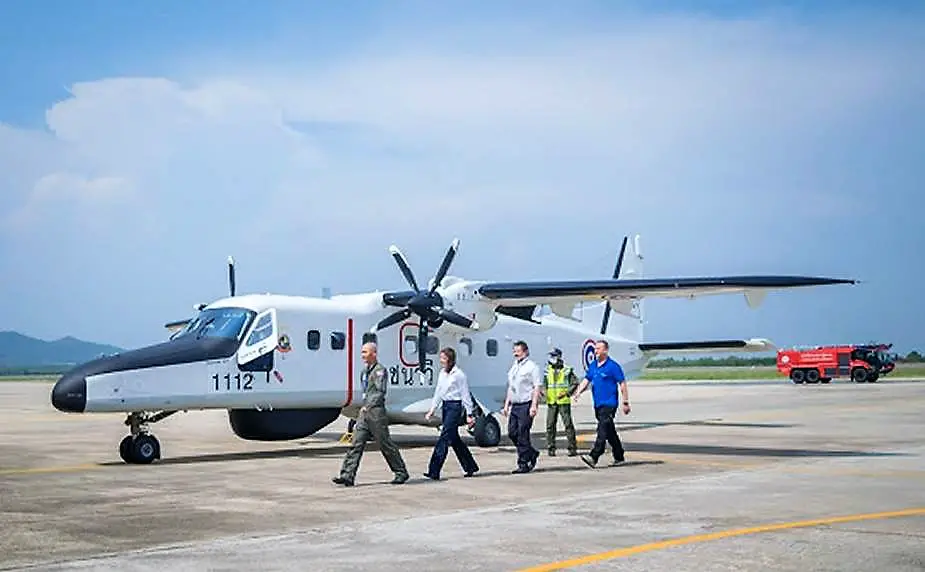According to Defense Studies on May 10, the reception ceremony for Maritime Reconnaissance Aircraft Dornier Do 228, No. 1112, Squadron 101 of Wing 1, Royal Thai Naval Air Division, Royal Thai Navy, took place on April 29, 2023, at U-Tapao International Airport. The first aircraft, Nr 1114, was received on February 15, 2023.
Follow Air Recognition on Google News at this link
 Dornier Do 228 Nr. 1112, the second modernized aircraft of this type in the Royal Thai Navy (Picture source: RTN)
Dornier Do 228 Nr. 1112, the second modernized aircraft of this type in the Royal Thai Navy (Picture source: RTN)
Do 228 No. 1112 and No. 1114 have been modernized under the Maritime Security Initiative (MSI) program assisted by the US Government. They had been sent to the aircraft factory of Dornier Luftfahrt GmbH at the airport Oberpfaffenhofen, Germany, at the end of December 2020.
Naval Air Systems Command (NAVAIR) of the U.S. Navy announced on July 22, 2020, that Swiss company RUAG had received a $40.2 million contract to manage the modernization of the Do 228 of the Royal Thai Navy whose 7 aircraft are taken in charge by RUAG MRO International RUAG Aircraft Maintenance Center. These Do 228s have an average lifespan of more than 25 years.
The modernization includes the installation of a glass cockpit and new mission system equipment, as well as an up-to-date avionic system, including reconnaissance radar, infrared thermal imaging camera as well as a mission management system. The improved data link network connection will allow the aircraft to be used for another 15-20 years.
The Dornier Do 228 is a versatile twin-turboprop aircraft that is known for its exceptional performance, reliability, and flexibility. Designed and manufactured by Dornier GmbH, the Do 228 is primarily used for various missions, including regional transportation, maritime surveillance, cargo operations, and special mission applications.
The aircraft features a robust and sleek design with a high-wing configuration, which provides excellent stability and maneuverability. Its sturdy construction enables it to operate in a wide range of challenging environments, including short and unprepared runways, making it suitable for both urban and remote locations.
The Do 228 offers a spacious cabin with ample room to accommodate up to 19 passengers comfortably. The interior can be easily configured to cater to various requirements, such as passenger transport, cargo carriage, or specialized equipment installation. The large windows provide panoramic views for both passengers and crew, enhancing the overall flying experience.
Powered by two reliable and fuel-efficient turboprop engines, the Do 228 boasts impressive performance capabilities. It can achieve a cruising speed of around 250 knots (460 km/h) and has a maximum range of approximately 1,600 nautical miles (2,963 kilometers), allowing for efficient regional travel or extended surveillance missions.
In terms of avionics and technology, the Do 228 incorporates advanced systems to ensure safe and efficient operations. It is equipped with modern navigation aids, weather radar, autopilot, and advanced communication systems, which enhance situational awareness and enable seamless integration into controlled airspace.
The aircraft's adaptability and versatility are further highlighted by its ability to be modified for specialized missions. It can be equipped with surveillance sensors, aerial photography equipment, medical evacuation provisions, or search and rescue gear, making it a reliable asset in various demanding operations.
















